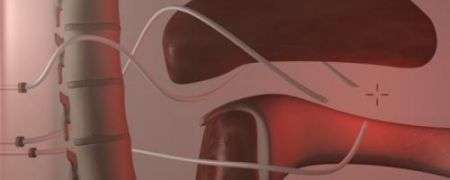December 14, 2007 weblog
Innovations in Robotics and Automation: Focus IEEE & UC Berkeley

Current research in the field of robotics and automation is an area that holds great promise in man's ecological system. Professor Ken Goldberg, Director of the Berkeley Center for New Media at the University of California at Berkeley, is the Vice President of IEEE Robotics and Automation, Technical Activities.
Professor Goldberg´s lab has received funding from the National Science Foundation and the National Institute of Health for innovations in technology. Selected research projects will be discussed below.
The Respectful Camera Project:
Professor Goldberg and his colleagues at the University of California at Berkeley have received a grant from the National Science Foundation. The research project involves developing a technology that will essentially veil the identity of individuals captured in surveillance cameras. We live in an era where surveillance cameras appear in nearly all of our daily activities. The obvious places like airports, governmental buildings and hospitals have been expanded to include local dry cleaners, convenience stores and shopping centers.
The rub comes in when an individual going about his or her daily activities finds their image captured and stored on video without their permission. The image could be an embarrassing pose or simply an unwarranted invasion of the person´s privacy which may constitute in some jurisdictions a violation of privacy rights.
Professor Goldberg´s team is working on a method to provide individual privacy while still enabling the cameras to track physical movements of the person and surrounding activity. The hypothesis used for the project is that in real time, (30 frames per second), it is possible to reliably identify moving markers worn by individuals in a video stream and to overlay obstructions over face and body to hide the identity of the person. The other working hypothesis is that most people will find this method of obscuring their actual identity provides a sufficient means of protecting their privacy concerns.
According to Professor Goldberg, "Our approach is to use wearable "markers" that can be detected by image processing software." He cites examples of inexpensive hats of a particular color or pattern at the border where the camera is present. This type of respectful covering is currently in use in the form of hats and leggings at the entrance to synagogues and churches. In effect, the security concerns are addressed and the privacy of the individual is protected.
This project is a work in progress. Initial findings and a paper on the subject may be found at: Respectful Cameras: Detecting Visual Markers in Real-Time to Address Privacy Concerns. Jeremy Schiff, Marci Meingast, Deirdre K. Mulligan, Shankar Sastry, and Ken Goldberg. International Conference on Intelligent Robots and Systems (IROS) . [Submitted] San Diego, California. October 2007.
Actuator Networks:
The current research in creating "smart buildings" and adjacent environs utilizes sensor networks with processors, memory and wireless networks. Dr. Goldberg´s team is investigating the concept of an Actuator Network. This concept involves enhancing the passive sensing devices with distributed actuation. In effect this means to emit different amplitudes and wave lengths of light or sound that effect the environment. Generally the Goldberg team aims to generate a "potential field" of attracting and repelling actuators.
In a security setting, the team is experimenting with a pulse of sound that gets the persons´ attention, thereby getting a better facial view. Other methods under study include use of bad odors, bright lights or annoying sounds to encourage the person from a certain location or space. This is aimed at crowd control methods used by security service.
In a natural setting, the team is working on using light and sound to induce animals or birds to move to a certain location. In practice this aspect of the research would be used in moving herds or allow better views of migrating birds.
One of the most innovated and useful applications of the Goldberg team involves its use in emergency evacuation situations. The "smart net" technology would be pre-installed in smart buildings. In practice, the technology would guide firefighters and other rescue personnel to perform search and rescue operations. In a fire rescue scenario, sensors called "motes" would sense heat and light up red or green in different amplitudes to form a green corridor for fast exit.
This research project will be presented at the International Conference on Robotics and Automation in May 2008. The abstract, Actuator Networks: Inducing Potential Fields to Guide a Moving Element to a Desired Position Using Push-Cage-Squeeze Cycles. Jeremy Schiff, Danny Bazo, Vincent Duindam, Dezhen Song, and Ken Goldberg. International Conference on Robotics and Automation (ICRA) . [Submitted] Pasadena, California. May 2008.
Other On-Going Projects:
The range of innovations being explored by Dr. Goldberg and colleagues also includes developments in medical science and the arts. The Flexible Needle is a collaborative project with the Berkeley Automation Science Lab, John Hopkins University and Queens University. The National Institutes of Health funded project will enable surgeons to utilize image guided intraoperative needle control.
The innovative needle steering approach has the potential to improve targeting accuracy for a wide range of medical procedures. Some of the procedures include; chemotherapy, cell therapy, biopsy and tumor ablation. In addition, the Flexible Needle innovation could conceivably improve existing procedures and provide alternatives to current invasive surgical procedures.
In conclusion, the ever expanding field of robotics and automation is embarking on solutions in real time for the realities of our human ecology continuum.





















